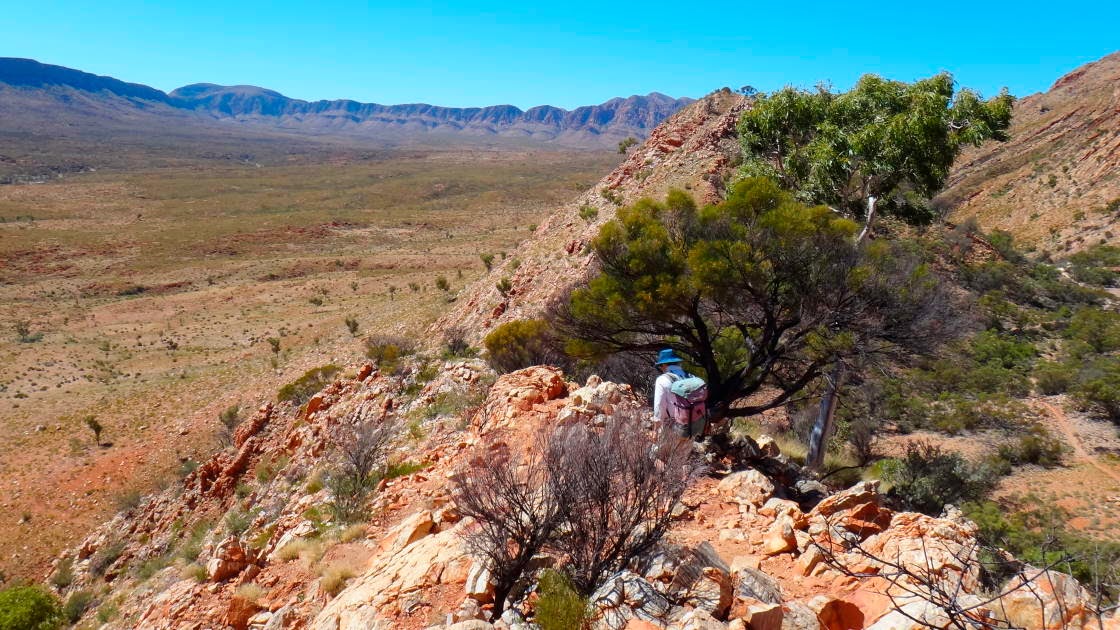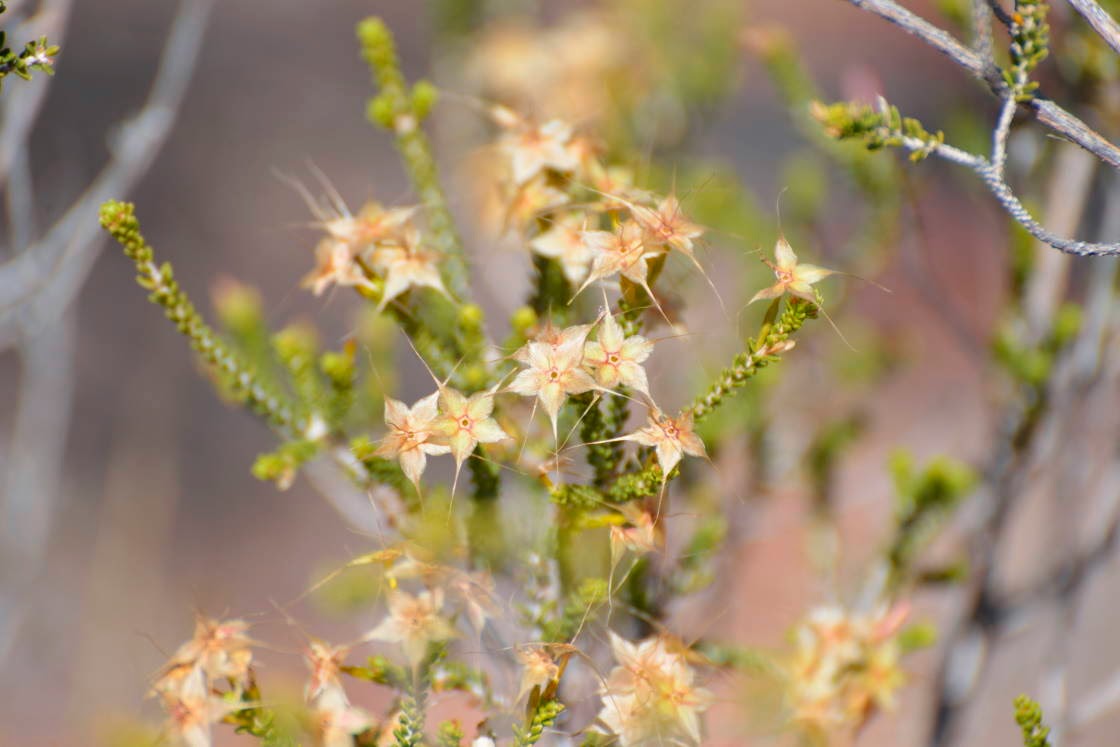The sandstone pillar towers 50 metres above the surrounding plain and can be seen in the middle of the photograph.
The pattern of parallel sand dunes covered in light green spinifex and the desert oaks in between was just magic! Yet again, there were so many wildflowers!
This flower is called Poached egg daisy (Polycalymma stuartii). Check out the number of petals!
Desert oaks (Allocasuarina decaisneana) apparently grow "pencil-shaped" until the roots find water as seen in the background. Only then do they grow a canopy and look like trees.
Camping at its best: between red sand dunes, under desert oaks and nobody else!
What exactly do they think you would use a chainsaw for? There was not a tree in sight!
Here we are, in the Simpson Desert again! One of our favourite places in Australia! This time we decided to do the crossing on our own. We had plenty of diesel, water and food, we knew what to expect and if we were not in Innamincka before an agreed date, our friends would call Birdsville police. It turned out we were on the Frenchline just after the Birdsville races and during the first two days we had to get out of the way for over 50 cars going in the opposite direction. Lucky we had a sand flag and a UHF radio!
The colour of the sand changes depending on the time of day and the location within the desert. Some dunes are bright orange, some beige, some brown.
The blooming wattles were a nice addition to the colours!
And of course some more close ups of flora and fauna!
The Simpson Desert has many natural springs and man-made bores, some of them producing thermal water, all of which attract many different bird species.
From Innamincka we decided to make a small detour to see the famous Coongie Lakes, which are protected under the RAMSAR wetland convention. A total of 205 bird species have been recorded in the permanent freshwater lakes, some of them migratory species from Asia. We only saw brolgas and ducks and lots of mozzies!
Once Kirsten drove through this gate into NSW, there was no stopping her and we were home in two days!
Trip Summary:
31,000 kms in 6.5 months
31,000 kms in 6.5 months
Over 3,000 litres of diesel used
Most expensive diesel: $2.50/litre
Over 6,000 photos taken






























































